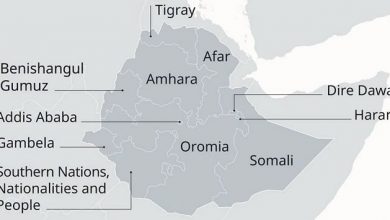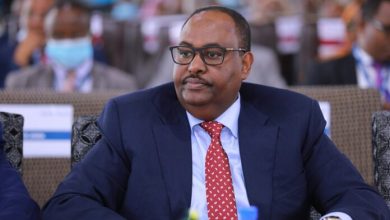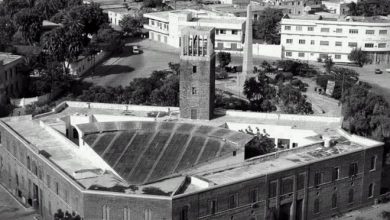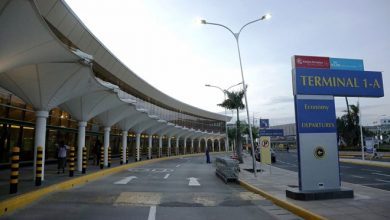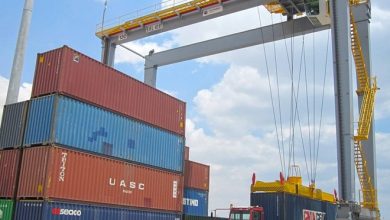Latest news update
Italian Somaliland: The Road to Trusteeship
The article is not to blame or praise individuals, groups or clans but to show the struggles and political divide of our fathers. Their views of the critical junction after the second world war and the aspirations of the Somali people for independence. Thomas Jefferson in his Notes on Virginia, 1784 wrote:
The article is not to blame or praise individuals, groups or clans but to show the struggles and political divide of our fathers. Their views of the critical junction after the second world war and the aspirations of the Somali people for independence. Thomas Jefferson in his Notes on Virginia, 1784 wrote:
“History, by appraising them on the path, will enable them to judge of the future; it will avail them of the experience of their times and other nations.”
The main question this article tries to shed light on is: Did Somaliland chose Italy to administer their country under the United Nations Trusteeship System or was it imposed on them against their wishes?
The Big Four disagree:
On February 10, 1947, the victorious countries of the Second World War held an International meeting in Paris, France to sign a treaty of peace. Since Italy was on the losing side of the war, it renounced all rights to her former colonies of Libya, Eritrea and Italian Somaliland.
Article 23 of the Paris Peace Treaty provided that the final disposition of these territories was to be determined jointly by the big four powers: France, The United Kingdom, The United States and the USSR within one year after the enactment of the Treaty, namely by September 15, 1948.
If the four powers were unable to reach an agreement within this time-limit, the question was to be referred to the General Assembly for a decision.
The council of foreign ministers of the victorious powers sat to discuss the matter on October 20, 1947. It was agreed that a four power commission of investigation be appointed.
This commission visited the territories concerned from October 1947 to May 1948. In the case of Somaliland the commission visited Mogadishu in January 1948 to hear the desires of the inhabitants. It met with several organizations of which the most notables were: The Hisbiya-Digil/Mirifle, Somalia Conference or (Conferenza), The Banadir Youth League, The Progressive League of Majerten, and The Somali Youth League or S.Y.L.
The last organization the commission invited to hear was the Somali Youth League on January 11, 1948 at 3:00 p.m. On that afternoon, the supporters of the SYL rallied in an open ground at “Dhagaxtuur” to show strength. It was well known that the SYL members opposed the return of Italy to Somaliland. A fighting broke out between the supporters of the SYL and the supporters of the Conferenza – a pro-Italian coalition organization sympathetic to the return of Italian rule in Somaliland.The confrontation spread throughout the city.
The SYL instead attacked the Italian community in Mogadishu accusing them of being behind the Conferenza. Fifty-two Italians were killed and eleven Somalis died including the famous martyred Hawa Aden Isman, popularly known as Hawa-Tako and twenty-two others injured.
The nominal ( under the British Military Administration) Italian mayor of Mogadishu fled away from his office and took refuge in Mogadishu’s main Cathedral. The commission met the representatives of the Somali Youth League the next day and thus completed their mission in Somaliland.
Ads By Google
The four-powers of France, Great Britain, Russia and the United states could not reach an agreement and in September 1948, they jointly referred the whole matter to the General Assembly.
The General Assembly:
The most difficult issue before the General Assembly in its 3rd session in April 1949 was the question of the disposal of the former Italian Colonies in Africa. The former Italian Colonies of Libya, Eritrea and Italian Somaliland had been an international controversy since the Paris Peace Treaty on February 10, 1947.
A first Political Committee was set up to debate on the subject and recommend a proposal on the disposition of these territories. The members of the first committee were: Afghanistan, Argentina, Australia, Belgium, Bolivia, Brazil, Byelorussia, Canada, Chile, China, Colombia, Costa Rica, Cuba, Czechoslovakia, Denmark, Dominican Republic, Ecuador, Egypt, El Salvador, Ethiopia, France, Greece, Guatemala, Haiti, Honduras, Iceland, India, Iran, Iraq, Lebanon, Liberia, Luxemburg, Mexico, Netherlands, New Zealand, Nicaragua, Norway, Pakistan, Panama, Paraguay, Peru, Philippines, Poland, Saudi Arabia, Siam, Sweden, Syria, Turkey, Ukraine, South Africa, USSR, UK, USA, Uruguay, Venezuela, Yemen, and Yugoslavia.
During several days of intensive debate the delegates of these 58-member states all stressed the importance of the assembly’s decision on these problems, affecting the future of over 3 million people in Africa, as well as strategic and economic factors in an area which stretches from the central Mediterranean to the Indian Ocean.
The debate mainly revolved around three questions:
(1) Trusteeship of any one power;
(2) collective trusteeship of the UN; and (
3) Italian trusteeship.
The members of the assembly can be classified into five blocks: The Latin American block, the Western European block, The Eastern European block, The Asian block, and the African block.The Latin American countries being the strongest block in the assembly supported for Italy’s claims to her former colony of Somaliland. The Western European countries were eying for the strategically and economically more important territories of Libya and Eritrea.
The Eastern European and Asian block jointly supported the idea of a collective trusteeship for all the territories with an administrator appointed by the UN until such a time as a plebiscite was held to ask the inhabitants their political future.
The African group being small in number had no unified front. Ethiopia opposed the return of Italy in the Horn of Africa solely for the fear that the former Italo-Ethiopian frontier treaty of May 16, 1908 between Somaliland and Ethiopia which stretches out up to all the Somali nomad’s watering wells deep inside Ethiopia – should be applied.
Local Party Opinions:
The United Kingdom proposed a sub-committee to be set up to invite and hear indigenous organizations and political groups claiming to represent public opinion in the territories. The committee commenced to hear two organizations from Somaliland:
(1) The Somali Youth League; (2) a coalition of Somalia Conference and The Progressive league of Majerten.
The Somali Youth League ever suspicious of the Italian Doctors and Nurses in Mogadishu strongly advised their travelling representative Abdullahi Isse not allow himself to be vaccinated.
In a secret meeting of the League, a member, Mohamud Aden ” Muro” volunteered to present himself to be vaccinated.
His courageous acts remained legendary for generations and the Italian nickname “Muro” – the “Wall” stuck.
The Somali Youth League:
On Thursday April 21, 1949 at 10:30 a.m. (New York time) the committee invited the representative of the Somali Youth League to take seat.
Abdullahi Issa Mohamoud told the committee that he represents the overwhelming majority of the inhabitants of Italian Somaliland. He impressed the committee by eloquently explaining that his travel expenses came mainly from contributions derived from the poor but heroic women of Somaliland who donated their jewellery; and his humble lodgings here in New York were provided by Somali seamen whose only interest is the freedom of their country.
He warned the committee not to allow themselves to be misled by those organizations who claim to represent the plight of the people of Somaliland. As you shall see they are smartly dressed individuals with a generous pocket money.
They come to New York on comfortable transportation and live lavishly in a first-class hotel. Such expenses can be covered only by Italian interests in Somaliland.
He declared that the restoration of Italian administration over Somaliland in any form or guise was totally unacceptable to his people.
He recalled that under paragraph 2 of Annex XI of the Paris Peace Treaty, Italy had renounced all titles to her former colonies, agreeing that the final disposition of the territories was to be made in accordance with the wishes and welfare of the indigenous inhabitants, and in the interest of peace and security.
To the people of Somaliland the Peace Treaty itself was “the instrument of liberation.” If it meant anything it was that Italy had been judged by as unfit to have anything more to do with the administration of her colonies, and the Somali people considered this a just and heartening decision.
Now, however, it appeared that some governments thought the Treaty left way open for the return of Italian rule under the guise of a United Nations Trusteeship. Somali people would not see any difference in such a regime.
Italian trusteeship would only mean that Italian rule had returned and that would be completely contrary to the wishes and welfare of the people. Abdullahi Isse deplored and feared the tendency to discuss the future of his country on the bases of European politics, and appealed to the United Nations not to sacrifice his people “on the alter of political expediency.” The people of Somaliland wanted a collective trusteeship for a period of not more than 10 years leading to the country’s independence at the end of 10 years. (Official Records: U.N. Sales No. A11, 1949)
The Somalia Conference:
The committee also heard statements from the representative of Somalia Conference on May 3, 1949 at 3:00 p.m. Islao Mahadalle Mohamed claimed to represent seven parties which had formed a coalition in September 1947.
The Patriotic Beneficence Union, The Hisbiya-Digil/Mirifle, The Somali Young Abgal Association, The Somali African Union, The Biyamal Union, The Hidiyat-al-Islam Shidle/Moblen, and the Progressive League of Majerten.
He had also been asked to represent by groups who had been unable to send a special representative such as the Hawiya and the Sub tribes which between them formed two-thirds of the Somaliland population.
He cautioned the committee not be misled by the representative of the Somali Youth League who represent only a few people of Mogadishu.
He pointed out that the Majerten (a segment of the Darod tribe) were particularly in favour of an Italian trusteeship, and had sent on their behalf Yassin Ali Sharmarke, president of the Progressive League of Majerten, to New York.
That party had split from the SYL after the Mogadishu Majerten had taken decisions without consulting the larger Majerten population who live in the North East of the country.
The representative of the SYL represented only the minority Mogadishu section. As to the majority of the Majerten, their sultan Musa Yusuf Boqor has sent a telegram to the United Nations declaring himself in favour of Italian trusteeship.
According to Mr. Islao Mahadalle the majority of the people of Somaliland desire Italian trusteeship over the territory until such a time as the people were ready for independence.
Any system of collective trusteeship for the territory was strongly opposed by the Somalia Conference Party which considered it essential for the administration to be entrusted to a single nation. That state should be Italy, because it could be fairly claimed that most of the Somalis speak Italian. (ibid)
Victory for the SYL:
Victory for the SYL:
After a heated debate, during which the committee‘s proposals were attacked by the delegations of Eastern European and Asiatic states, voting on a draft resolution by Western European States took place on the late hours of May 18, 1949.
The draft resolution called among other things, for Somaliland to be placed under an Italian Trusteeship. The vote on article 2 proposing for a United Nation Trusteeship for Somaliland under Italian Administration failed to receive the necessary two-thirds majority.
To the disappointment of the Latin American states the result was: 33 votes in favour, 19 against, and four abstentions. The Eastern European and Asian countries led by Russia, India and Pakistan had a reason to smile. The Latin Americans led by Argentina threatened to oppose all the articles of the resolution because “the most important provision of the resolution was rejected.”
The most joy full celebrations happened in Somaliland. In Mogadishu at 9:00 a.m. local time, all the Mosques in the city’s loud speakers recited the Koran and the Muazins called for the people to an immediate (salatu-shukri) prayer for this God-given gift from New York.
Tearful eyed women and chanting crowds with SYL banners took the streets paralysing the daily business activities and transportation.Thus the question of the disposal of former colonies in Africa failed to pass through and the problem was adjourned to the 4th session due to start in September 1949.
Loss for the SYL:
When the 4th session opened in September, the situation changed and the political forces shifted in favour of the Latin American states. The question of Libya and Eritrea was negotiated by the four big powers.
Members of the Arab League states were only interested in the welfare of the Arab peoples of Libya. India and Pakistan were left to cling on to the fate of the less important Italian Somaliland.
When they sensed that the political forces were strong enough to oppose they negotiated a constitutional principle to be annexed to the trusteeship agreement. As it turned out the members of the SYL took the matter into their hands and a great hue and cry in opposition to the return of Italy broke out in Mogadishu and throughout Italian Somaliland.
On October 6 and again 11 the people of Somaliland took to the streets and rioting broke out in several major towns.
The British Military Administration responded by firing on the demonstrators and jailed or exiled SYL leaders and notables. Abdullahi Isse made a statement before the committee and told stories of jailing, torture and massacre being committed on his people by the British in Somaliland.
The committee proposed a resolution which advised Great Britain to respect the free aspirations of the peoples of Somaliland. Even though the resolution failed to pass; Great Britain saved face by releasing the SYL leaders and opening the offices of the Party.
Final Decision:
However, after two months of debate and negotiations the General Assembly of the United Nations reached on November 21, 1949 a final decision on the future of Somaliland.
Italian Somaliland will become an independent sovereign state after ten years from the date of the approval by the assembly of a trusteeship agreement for the territory, with Italy as the administering authority in the interim period.
An advisory council, consisting of the representatives of Colombia, Egypt and the Philippines, will aid and advice Italy in its trusteeship administration.
Forty-eight nations voted in favour, one (Ethiopia) opposed and nine abstentions (France, Yugoslavia, New Zealand, Sweden and the Russian Federations). Thus the case was closed and the question of the disposition of Italian Somaliland was rightly or wrongly resolved.
Italy assumed Trusteeship of Somaliland on April 1, 1950. The name of the country officially became: The United Nations Trust Territory of Somaliland under Italian Administration. Italy assumed the title of Amministrazione Fiduciaria Italiana Della Somalia or (AFIS).
As for Abdullahi Isse Mohamoud, defeated and broken; and fearful of retaliation by the Administering Authority never returned to Somaliland until tensions eased between Italy and the Somali Youth League after 5 years in 1954.
He resigned as General Secretary of S.Y.L. But the League did not accept his resignation or fill the post. He was never employed by AFIS.
He assumed premiership of the internal administration of Somaliland on May 1956 when S.Y.L. obtained the majority seats of the general elections.
Omar M. Mohamed
Email: omoha@hotmail.com

